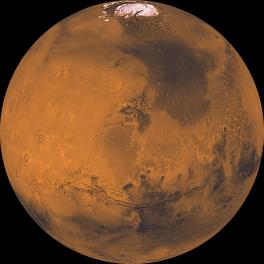NRC’s Supporting Role in NASA’s Mars 2020 Launch
Posted by on December 7, 2016
Senior Reliability and Risk Engineer
 “Outer
space” may not come to mind when you think about the NRC. But we’re
excited to be involved with NASA in the planning for a 2020 launch of
another Mars rover.
“Outer
space” may not come to mind when you think about the NRC. But we’re
excited to be involved with NASA in the planning for a 2020 launch of
another Mars rover.As explained by NASA:
The Mars 2020 rover mission is part of NASA’s Mars Exploration Program, a long-term effort of robotic exploration of the red planet. Designed to advance high-priority science goals for Mars exploration, the mission would address key questions about the potential for ancient life on Mars. The mission would also provide opportunities to gather knowledge and demonstrate technologies that address the challenges of future human expeditions to Mars. The mission would take advantage of a favorable launch opportunity in 2020 when Earth and Mars are in ideal positions in their orbits for a Mars landing in early 2021.
So what does planetary exploration have to do with the NRC? Well, like past missions of this type, the Mars 2020 mission will use a Multi-Mission Radioisotope Thermoelectric Generator – which goes by the fancy acronym of MMRTG. That’s a fancy name for using the radioactive decay of plutonium to produce electrical power needed to run the rover and its instruments.
 Since
the NRC regulates the safe use of radioactive materials, we are part of
the Mars 2020 Interagency Nuclear Safety Review Panel that NASA has
convened to assure the safety of the launch. This process was originally
put in place by Presidential directive and
is used each time the U.S. prepares for this type of launch. In
addition to NASA and the NRC, the panel includes members from the
Department of Energy (which builds and owns the MMRTG provided to NASA),
the Department of Defense and the Environmental Protection Agency.
Since
the NRC regulates the safe use of radioactive materials, we are part of
the Mars 2020 Interagency Nuclear Safety Review Panel that NASA has
convened to assure the safety of the launch. This process was originally
put in place by Presidential directive and
is used each time the U.S. prepares for this type of launch. In
addition to NASA and the NRC, the panel includes members from the
Department of Energy (which builds and owns the MMRTG provided to NASA),
the Department of Defense and the Environmental Protection Agency.I am honored to serve as the NRC-appointed technical advisor to the panel. The panel’s job is to prepare a Nuclear Safety Evaluation Report — which will be delivered to the White House’s Office of Science and Technology Policy as part of NASA’s request for the President’s authorization of the launch. The panel will evaluate the potential radiological hazards associated with the launch, and the methods used to mitigate the risks.
The NRC has served a similar role in other NASA launches over the past several decades, most recently with the 2011 launch of the Mars Science Laboratory mission and its rover, Curiosity. In addition to this important activity, the NRC and NASA share knowledge in safety, reliability, and risk analysis methods and applications though a Memorandum of Understanding and other interactions.
NRC policy requires other federal agencies to reimburse us for providing services that aren’t part of our statutory mission. So NASA will reimburse us for labor and travel costs associated with our service on the launch safety review panel. In other words, NRC’s licensees (such as nuclear power plants) don’t end up footing the bill for NRC’s participation in this activity.
More on the Mars 2020 mission can be found at NASA’s website, and in the associated Final Environmental Impact Statement associated with this mission.

No comments:
Post a Comment